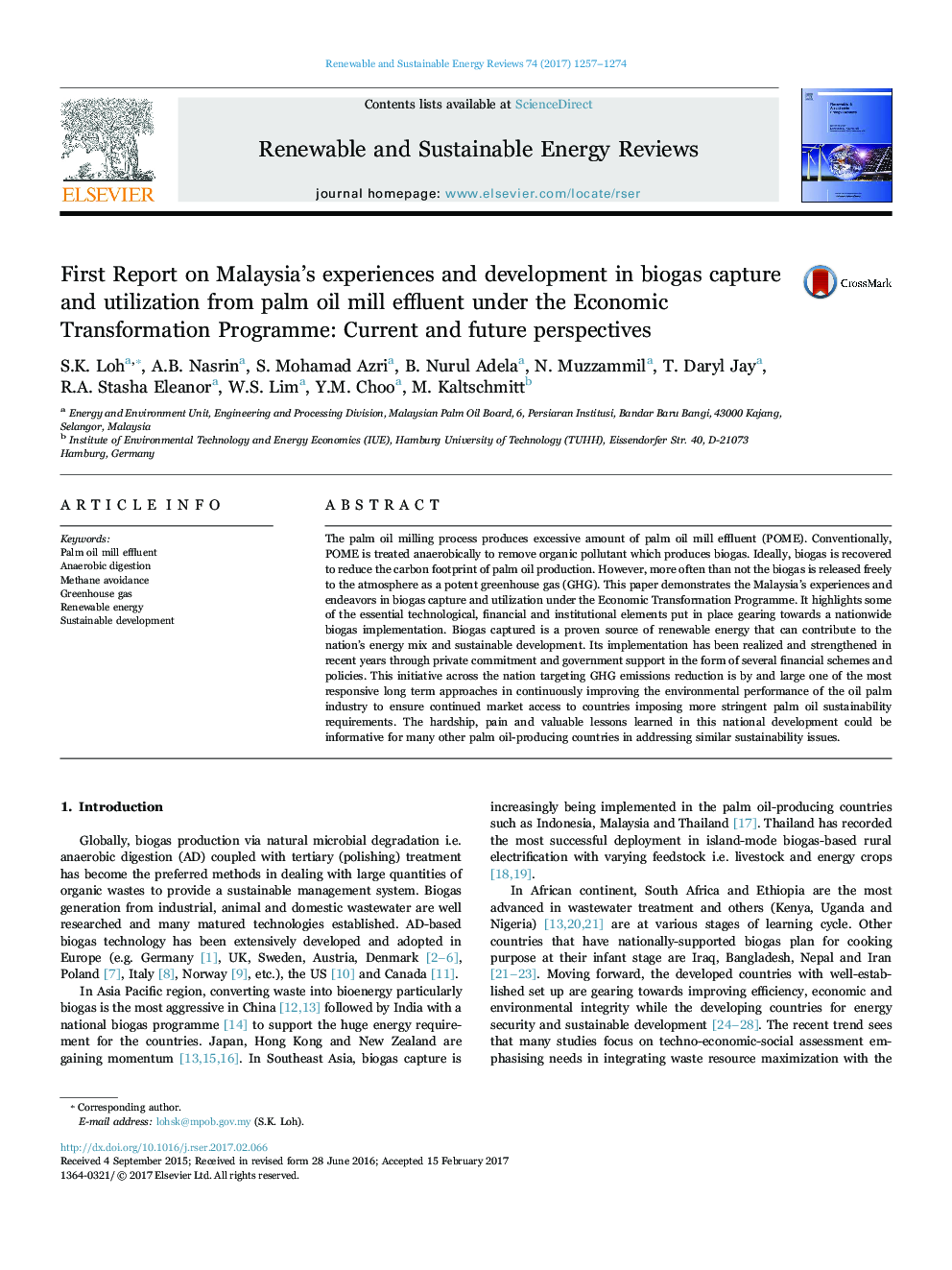| Article ID | Journal | Published Year | Pages | File Type |
|---|---|---|---|---|
| 5483187 | Renewable and Sustainable Energy Reviews | 2017 | 18 Pages |
Abstract
The palm oil milling process produces excessive amount of palm oil mill effluent (POME). Conventionally, POME is treated anaerobically to remove organic pollutant which produces biogas. Ideally, biogas is recovered to reduce the carbon footprint of palm oil production. However, more often than not the biogas is released freely to the atmosphere as a potent greenhouse gas (GHG). This paper demonstrates the Malaysia's experiences and endeavors in biogas capture and utilization under the Economic Transformation Programme. It highlights some of the essential technological, financial and institutional elements put in place gearing towards a nationwide biogas implementation. Biogas captured is a proven source of renewable energy that can contribute to the nation's energy mix and sustainable development. Its implementation has been realized and strengthened in recent years through private commitment and government support in the form of several financial schemes and policies. This initiative across the nation targeting GHG emissions reduction is by and large one of the most responsive long term approaches in continuously improving the environmental performance of the oil palm industry to ensure continued market access to countries imposing more stringent palm oil sustainability requirements. The hardship, pain and valuable lessons learned in this national development could be informative for many other palm oil-producing countries in addressing similar sustainability issues.
Keywords
Related Topics
Physical Sciences and Engineering
Energy
Renewable Energy, Sustainability and the Environment
Authors
S.K. Loh, A.B. Nasrin, S. Mohamad Azri, B. Nurul Adela, N. Muzzammil, T. Daryl Jay, R.A. Stasha Eleanor, W.S. Lim, Y.M. Choo, M. Kaltschmitt,
